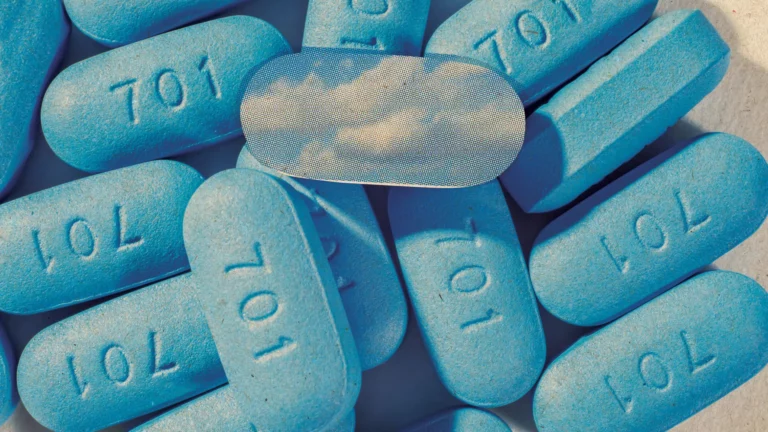What is Blue Balls?
“Blue balls” is a colloquial term that has permeated popular culture for generations. Traditionally, it describes a feeling of pain or discomfort in the testicles experienced by some men after prolonged sexual arousal without release. As with many aspects of human sexuality, it is often shrouded in mystery, misperception, and sometimes even humor.
The phrase itself is a bit misleading. The term suggests a visual blue hue to the testicles, which isn’t actually a characteristic of the condition. Instead, the name probably originated from the sensation some men describe which feels like a heavy or aching discomfort, akin to the feeling of being bruised.
Popular culture often references this phenomenon in comedic contexts, leading to a mixture of curiosity and skepticism. Movies, television shows, and even music have, at times, made light of the situation. However, beneath the veil of humor lies a physiological process that is genuinely intriguing and worthy of discussion.
The perception of this phenomenon outside of media and cultural references varies. While some men swear by its existence and can recall personal experiences, others are more doubtful. The debate has spurred discussions about whether “blue balls” is a legitimate physical concern or if it’s largely psychological.
Misunderstandings about “blue balls” are not surprising given the lack of formal sexual education on the topic in many cultures. Even in places with comprehensive sex education, this particular phenomenon is often left out or merely mentioned in passing.
Understanding “blue balls” requires a look into human biology, sexual response cycles, and the intricacies of the male reproductive system. Moreover, with recent scientific studies shedding light on this topic, there’s now a richer, evidence-based perspective to explore.
Frequency of Blue Balls Among Different Age Groups
| Age Group | Percentage Reporting ‘Blue Balls’ | Average Duration of Discomfort | Percentage Seeking Alleviation Techniques |
|---|---|---|---|
| 15-20 | 70% | 1.5 hours | 65% |
| 21-25 | 60% | 1.3 hours | 58% |
| 26-30 | 50% | 1.2 hours | 52% |
| 31-35 | 40% | 1 hour | 48% |
| 36-40 | 35% | 50 minutes | 43% |
| 40+ | 30% | 45 minutes | 38% |
The Physiology Behind the Sensation
To truly comprehend the sensation often referred to as “blue balls,” one must first have a grasp on the broader physiology of sexual arousal in males. The human body, particularly during moments of heightened arousal, undergoes a myriad of changes, and understanding these can provide insights into why some men experience this unique discomfort.
During sexual arousal, there’s a significant increase in blood flow to the genital region. This phenomenon is known as vasocongestion. In men, it leads to the erection of the penis, as blood fills the corpora cavernosa and the corpus spongiosum, specialized erectile tissues. But the penis isn’t the only area affected. The testicles also experience increased blood flow and can even increase in size during arousal.
As arousal continues without climax, the pressure from the continued vasocongestion can lead to discomfort or aching in the testicles. It’s this sensation that has colloquially become known as “blue balls.” The name, however, is a misnomer. The testicles don’t turn blue; the term likely originated from the heavy or aching discomfort that’s reminiscent of a bruise.
It’s worth noting that vasocongestion doesn’t only affect males. Females experience it too, particularly in the vulva, vagina, and breasts during arousal. In fact, women might experience pelvic discomfort or heaviness when arousal doesn’t lead to orgasm, a phenomenon analogous to “blue balls” in men. However, it’s less commonly discussed or recognized in popular culture.
An essential hormone playing a role in arousal is testosterone. While it’s most commonly associated with male sexual health and function, it’s crucial in the arousal process for all genders. When testosterone levels surge, as is common during arousal, there’s an increased sensitivity and reactivity of the genital tissues to sexual stimuli.
Another critical component to understand is the role of the epididymis, a long, coiled tube located at the back of each testicle. It’s responsible for storing and transporting sperm. If there’s prolonged arousal without ejaculation, sperm can build up in the epididymis, potentially contributing to the sensation of pressure or discomfort.
Despite the physiological basis for “blue balls,” not all men experience it, and the intensity can vary among those who do. Several factors, including age, general health, frequency of sexual activity, and even individual pain thresholds, can influence whether a man will experience this discomfort and to what degree.
In summary, while “blue balls” might sound like a quirky or made-up term, the sensation has roots in the very real physiological changes that occur during sexual arousal. Whether or not every man experiences it, understanding the science behind the sensation fosters a more empathetic and informed perspective on the phenomenon.
Recent Scientific Discoveries and Studies
In recent years, scientific interest in the phenomenon colloquially termed as “blue balls” has grown. As with many aspects of human sexuality, researchers aim to discern the extent to which physiology, psychology, and societal constructs intertwine. Here are some of the recent findings and studies that shed light on this subject.
- Physical Basis of Vasocongestion: Recent imaging studies, including MRIs, have given scientists a closer look at the male genitalia during arousal. The results confirm the marked increase in blood flow during arousal, which does not dissipate easily without climax. This vasocongestion provides the most substantial evidence for the physical discomfort some men report.
- Variability in Experience: A study sampling a broad range of male participants showed that not all men experience the sensation of “blue balls,” and among those who do, the intensity and frequency vary. Factors such as age, health, and individual physiological differences play a significant role.
- Pain Thresholds: Some researchers theorize that individual pain thresholds might explain why some men report intense discomfort, while others hardly notice it. Studies have tried to correlate pain thresholds in other situations to the experience of “blue balls” with mixed results.
- Psychological Components: While there’s a clear physiological basis for “blue balls,” some studies suggest there might also be a psychological component. The anticipation and subsequent frustration of unfulfilled climax might intensify the physical sensations for some individuals.
- Comparison with Female Vasocongestion: Parallel studies on female vasocongestion have given an interesting perspective. Women, too, experience pelvic vasocongestion during arousal, leading some researchers to postulate that they might experience a similar discomfort, though it’s less talked about.
- Health Implications: Contrary to some myths, the studies consistently show that while “blue balls” might be uncomfortable, it doesn’t pose any long-term health risks. The body eventually dispels the excess blood in the genital region, and any discomfort naturally subsides.
- Role of Hormones: While testosterone’s role in male arousal is well-documented, recent studies have looked into other hormones and neurotransmitters, such as oxytocin and serotonin. Their levels and interactions might influence both arousal and the sensations following prolonged arousal.
- Cultural and Societal Influences: Cross-cultural studies indicate that the awareness and reported experiences of “blue balls” differ across cultures. This disparity hints at a potential societal influence on how the phenomenon is perceived and experienced.
The phenomenon of “blue balls” is not merely a cultural joke or an exaggerated tale told among men. The scientific community’s ongoing interest ensures that understanding continues to evolve, blending the hard facts of physiology with the intricate nuances of psychology and societal influence. As more research emerges, it becomes increasingly clear that the sensation is both real and multifaceted.
Myths and Misconceptions Debunked
For as long as the phenomenon of “blue balls” has been discussed, it’s been accompanied by myths, misconceptions, and misunderstandings. Many of these misconceptions arise from gaps in sexual education, cultural taboos, or simple misinformation. Let’s delve into some of the most common myths and debunk them with the help of scientific evidence.
- The Blue Hue Myth: Despite the name, the testicles don’t actually turn blue when experiencing this sensation. The term “blue balls” likely evolved metaphorically to describe the aching discomfort. It’s essential to note that any significant color change in the testicles should warrant medical attention, as it’s not a typical symptom of prolonged arousal.
- Danger to Health Myth: Some believe that not relieving the tension caused by prolonged arousal can be harmful or even dangerous. While the sensation can be uncomfortable, there’s no scientific evidence suggesting that it can lead to long-term health problems or conditions.
- Every Man Experiences It: Not all men experience “blue balls,” and among those who do, the intensity and duration can vary greatly. Factors like individual physiology, pain threshold, and even psychological factors play into whether a man might feel it.
- Only a Release Can Alleviate the Pain: While ejaculation can often relieve the sensation, it’s not the only solution. The body will naturally alleviate vasocongestion over time, and activities that divert attention or reduce arousal can also help.
- It’s Purely Physical: While there is a physiological foundation for “blue balls,” some studies suggest that psychological factors, like frustration or anticipation, might exacerbate the sensation.
- Women Don’t Experience It: While the term is male-centric, women also experience vasocongestion. The female equivalent might involve pelvic heaviness or an aching sensation due to prolonged arousal without climax. It’s simply less discussed in popular culture and doesn’t have as catchy a colloquial name.
- It’s a Manipulative Excuse: Some critics argue that the term is used manipulatively to pressure partners into sexual activity. While the discomfort is real for many, it should never be used as an excuse or tool for manipulation. Consent and mutual desire are paramount in any intimate situation.
- It’s Just a Teenage Thing: Some believe that “blue balls” is a phenomenon exclusive to teenagers or younger men. While younger men might discuss it more or experience it differently due to hormonal surges, men of various ages can experience it.
- Frequent Occurrence Means Health Issues: Experiencing the sensation often doesn’t necessarily indicate a health problem. However, consistent pain in the genital region, not linked to arousal, should be discussed with a medical professional.
Addressing and debunking these myths is crucial. Misinformation can lead to unnecessary anxiety, misconstrued expectations, and even unintended social consequences. By promoting a clear understanding of the topic, we can pave the way for healthier discussions and perceptions about human sexuality and physiological responses.
Prevention and Alleviation: Practical Tips
The sensation of “blue balls” might be an uncomfortable reality for some men, but it’s not an inevitability. With understanding and proactive approaches, individuals can manage, alleviate, or even prevent this discomfort. Here are some practical tips and suggestions rooted in scientific understanding and common experiences.
- Awareness and Communication: During intimate moments with a partner, open communication is key. Discussing boundaries, expectations, and feelings can help ensure both parties are on the same page, potentially preventing prolonged periods of arousal without release.
- Distraction: Engaging in other activities can help divert the mind from the sensation. Reading a book, watching a movie, or even doing some light exercise can shift focus and help in reducing arousal, thus alleviating discomfort.
- Cold Shower: A cold shower might sound like a cliché, but there’s some science behind its effectiveness. The cold water can help divert blood flow away from the genital area, reducing vasocongestion.
- Meditation and Deep Breathing: Techniques that promote relaxation, such as meditation and deep breathing exercises, can help reduce arousal and ease the sensations of vasocongestion.
- Wear Supportive Underwear: While this won’t prevent the phenomenon, wearing supportive underwear can reduce excessive movement and potential exacerbation of discomfort for some men.
- Time: Remember that the body is designed to naturally alleviate the symptoms of vasocongestion over time. Patience can often be a remedy in itself.
- Limit Stimulants: Excessive caffeine or other stimulants might increase blood flow and exacerbate sensations of discomfort. If you’re prone to experiencing “blue balls,” consider monitoring and possibly reducing your intake of these stimulants.
- Gentle Massage: For some, a gentle massage (not just limited to the genital area) can promote relaxation and increased blood flow to other parts of the body, which can help alleviate the discomfort.
- Know When to See a Doctor: While “blue balls” itself isn’t harmful, persistent pain or discomfort in the testicles, unrelated to arousal, should be a cause for concern. Always consult with a medical professional if you experience consistent or severe symptoms.
- Educate and Share: Share your knowledge about this phenomenon with friends and partners. Education and understanding can help reduce stigma and promote healthier, more empathetic discussions around the topic.
While the sensation of “blue balls” might be a genuine discomfort for some, it’s manageable and temporary. Through a combination of understanding, prevention, and alleviation techniques, individuals can navigate this aspect of male sexuality with confidence and comfort. As always, a balanced blend of science, self-awareness, and open communication provides the best approach.






